Wine tourism in Jura
Wine Tourism in Jura: destination information, how to move in Jura, Top Wine Experiences, Itineraries and tours, tips and secrets.
Jura is a hidden gem for wine enthusiasts, combining rustic charm with a deep-rooted winemaking tradition. Nestled between Burgundy and Switzerland, this region is known for its unique wines and enchanting landscapes of rolling vineyards and rugged mountains.
Jura’s wine culture is distinctive, with iconic grape varieties like Savagnin and Trousseau, and a famous vin jaune, a yellow-hued wine aged under a veil of yeast. The Route des Vins du Jura leads travelers through picturesque villages, historic cellars, and breathtaking natural vistas, showcasing the region’s authentic winemaking heritage.
Beyond wine, Jura is celebrated for its local gastronomy and artisanal cheese, especially the renowned Comté. Annual events such as the Percée du Vin Jaune festival highlight Jura’s vibrant traditions with tastings, celebrations, and the unmistakable warmth of the local community.
Whether you're exploring the scenic vineyards or enjoying the hospitality of its quaint villages, Jura offers a captivating experience that goes beyond the glass, inviting you to discover its unique blend of nature, culture, and passion for wine.
The Destination: Jura
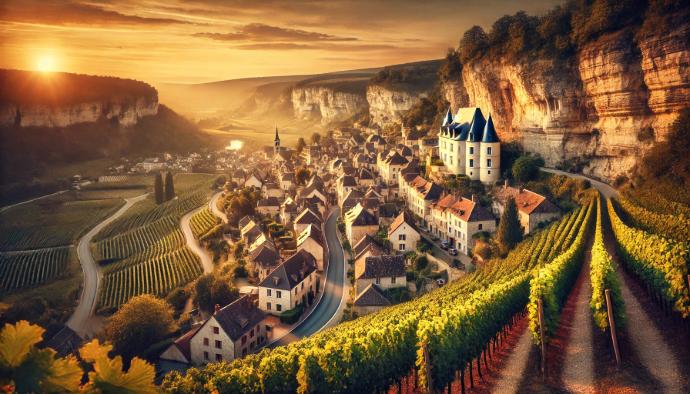
Nestled in eastern France, between Burgundy and the Swiss border, the Jura wine region is a hidden gem famed for its rugged landscapes, charming villages, and extraordinary wines. Spanning 1,850 hectares, this region boasts a rich tapestry of terroirs that shape its unique winemaking identity. Once ten times its current size, Jura’s vineyards faced significant challenges but were revived through the dedicated efforts of its winemakers. This resilience was recognized in 1936 when Arbois became the first French wine region to receive a PDO (Protected Designation of Origin).
The Jura region is dotted with picturesque towns and villages that exude history and charm. The historic town of Arbois, often referred to as the heart of Jura's wine country, is a must-visit, along with Château-Chalon, perched dramatically on limestone cliffs offering sweeping views of vineyards. Towns like Lons-le-Saunier, Poligny, and Pupillin add to the region’s allure, making it a paradise for curious travelers and wine lovers alike.
For a truly immersive experience, the Jura Wine Route spans over 80 kilometers (50 miles) and weaves through the region’s stunning landscapes and vineyards. Along this scenic journey, visitors can explore ancient cellars, meet passionate winemakers, and taste Jura’s distinctive wines. With over 200 wine producers welcoming visitors, it’s an opportunity to connect directly with the heart of Jura’s winemaking tradition.
Let’s take a look at how to plan your visit and experience the Jura wine region.
How To Reach Jura
When planning a trip to the scenic Jura wine region, here are three suggested travel routes to make the most of your journey.
Route 1: Jura and Burgundy Wine Tour
Begin your journey in Lyon, a culinary capital, and head north by car or train towards Jura, exploring the charming wine villages of Arbois, Poligny, and Château-Chalon. Continue into Burgundy, visiting Beaune and the renowned Côte d'Or vineyards. This route offers a deep dive into Eastern France’s wine culture, with stops to enjoy the contrasting wines and landscapes of these celebrated regions.
Route 2: Cross-France Adventure with Jura
Start in Paris and take a high-speed train to Dole or Besançon in Jura. After exploring Jura’s unique vineyards and tasting its famous vin jaune, head south to Provence or Lyon. This route combines Jura’s rustic charm with a taste of urban culture and Mediterranean landscapes, perfect for a well-rounded French experience.
Route 3: Multi-Country Journey (Jura – Switzerland – Alsace)
For an international adventure, begin in Jura, soaking up its mountain vineyards and artisanal cheese. Then, cross into Switzerland, visiting Geneva or Lausanne, and continue north to the Alsace wine region in France. This route captures the best of the Jura Mountains, Swiss lakes, and Alsace’s charming villages, ideal for a varied and scenic trip.
Flights
Jura doesn't have its own international airport, but nearby airports make the region accessible for international and domestic travelers.
Lyon-Saint Exupéry Airport is another good option, located around 150 kilometers (93 miles) from Jura, or about a 2-hour drive. From the Lyon-Saint Exupéry train station, you can also board a TGV train directly to Dole or Besançon, where you can connect to Jura’s charming wine villages by regional trains.
Basel-Mulhouse Airport, located around 160 kilometers (99 miles) from Jura, is another convenient gateway. A drive from the airport to Jura takes approximately 2–2.5 hours. Alternatively, you can take a train from Basel to Dole or Besançon, with connections to Jura’s picturesque wine towns.
Trains
France’s high-speed TGV network makes traveling by train convenient. TGV trains from Paris Gare de Lyon to Dole or Besançon make the journey in just 2–2.5 hours. Once there, TER regional trains can bring you to Jura’s renowned wine towns like Arbois, Poligny, and Lons-le-Saunier.
Car / Ncc
From Geneva , follow the A40 and A39 highways, enjoying the countryside on the 1.5-hour drive. Lyon is similarly close, with the A42 and A39 providing a straightforward route. From Paris, the trip takes around 4–5 hours on the A6 and A39, with scenic stops in Burgundy along the way, perfect for those who enjoy leisurely travel.
How to visit wineries in Jura
Once you’ve arrived in Jura, renting a car or bike is the best way to truly experience the region’s remote vineyards, charming villages, and stunning landscapes at your own pace. The Jura Wine Route stretches across some of France’s most picturesque wine country, and a car gives you the flexibility to visit hidden vineyards, explore the countryside, and take detours through quaint towns like Arbois, Poligny, and Château-Chalon, all known for their historic cellars and small, family-owned wineries.
While local buses run from major hubs like Dole and Besançon, the routes and schedules are limited, making them less ideal for a full winery tour. With your own car, you can access vineyards nestled off the beaten path, ensuring a richer experience of Jura’s wine culture and natural beauty.
For those who prefer a more active, immersive experience, renting a bike is a fantastic option. Many local shops in Arbois and Lons-le-Saunier rent bikes for a day or longer. Jura’s gently rolling hills and scenic, vineyard-lined roads make for enjoyable cycling, allowing you to appreciate the region’s peaceful, pastoral landscapes up close. Biking between vineyards lets you travel at a slower, more leisurely pace, savoring the views, fresh air, and rustic charm of Jura’s countryside.
Wine & Food in Jura
The Land of Rare and Characterful Wines
Nestled in eastern France between Burgundy and the Swiss border, the Jura wine region offers a world of truly distinctive wines shaped by its rugged terrain and the dedication of its vintners. Though small, Jura's wines leave a lasting impression, blending tradition, character, and terroir.
Renowned for its mix of unique red and white wines, Jura’s key grape varieties include Savagnin, Chardonnay, Trousseau, and Poulsard. The region’s white wines are especially notable for their oxidative style, exemplified by the legendary vin jaune (“yellow wine”).
Jura’s diverse terroirs and microclimates owe much to its geological makeup of limestone and marl soils. These create ideal conditions for a range of wine styles, from light, earthy reds to crisp whites and luscious sweet wines. Despite accounting for just 0.2% of France’s total wine production, Jura has gained global recognition for its exceptional quality and traditional techniques, making it a must-visit destination for wine lovers seeking something unique.
The region's vineyards, often planted on sun-kissed slopes, benefit from the distinct minerality imparted by Jura’s soils. This is expressed in wines that reflect the freshness and elegance of the land. Adding to its allure, Jura is at the forefront of eco-conscious viticulture, with 23% of its vineyards certified organic. Many producers embrace biodynamic methods, made feasible by the region’s warm summers and dry conditions that reduce the need for chemical interventions. Small, family-run wineries predominate, creating an atmosphere where producers personally share their passion and expertise with visitors.
In addition to its renowned still wines, Jura produces other gems like vin de paille (“straw wine”), a sweet wine crafted from dried grapes to concentrate sugars and flavors, and Crémant du Jura, a sparkling wine made using the traditional method. These wines offer a rich tapestry of options for casual enjoyment or cellaring, each showcasing the essence of Jura’s winemaking heritage.
Whether savoring a glass of vin jaune, exploring rolling vineyards, or connecting with welcoming producers, Jura offers an unforgettable journey into a region where tradition and innovation come together to create wines of exceptional character. A visit to Jura isn’t just a stop on a wine map — it’s a deep dive into a story of resilience, artistry, and unparalleled flavor.
Vin Jaune: Jura’s Golden Treasure
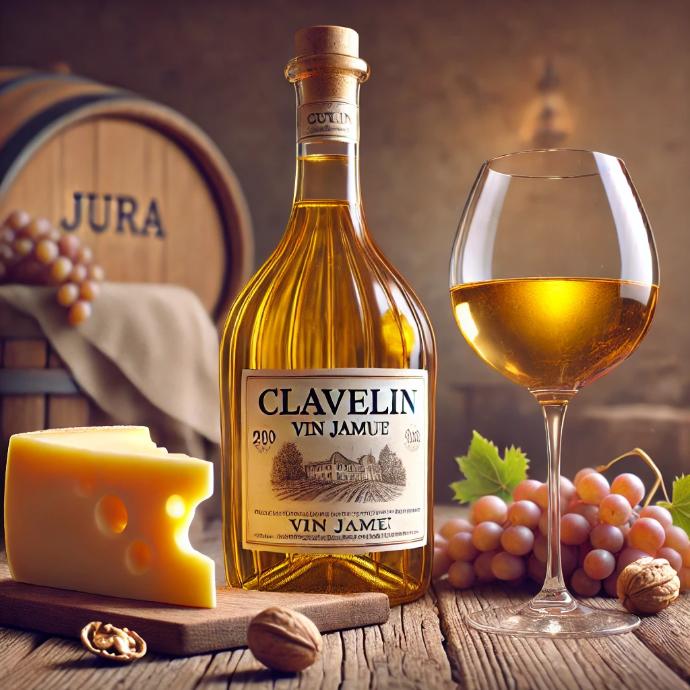
One of Jura’s most intriguing creations is vin jaune. Made exclusively from the Savagnin grape variety, the process begins with a late harvest to ensure optimal ripeness. After pressing, the must undergoes fermentation and is then transferred to oak barrels. Unlike most wines, vin jaune is not topped up during its aging process, which lasts at least six years and three months. This allows a natural yeast layer, known as the voile, to form on the surface, protecting the wine from oxidation while imparting its signature nutty, spicy, and complex flavors.
During this lengthy maturation, evaporation occurs, known as the “angel’s share,” leaving the wine more concentrated. After aging, it is bottled in the distinctive 620 ml clavelin, which represents the amount remaining after the aging process.
Vin jaune is produced across four appellation areas in the Jura vineyard: Arbois AOC, Côtes du Jura AOC, L’Etoile AOC, and Château-Chalon AOC. The village of Château-Chalon is particularly significant, as its entire vineyard is devoted to the Savagnin variety, making it the cradle of vin jaune. This clifftop village offers panoramic views of the surrounding vineyards and is recognized as one of the "Most Beautiful Villages in France."
Often likened to sherry due to its oxidative style, vin jaune retains a character entirely its own. It pairs exceptionally with Comté cheese, roast chicken, and rich, creamy dishes. This golden treasure is a testament to Jura’s winemaking tradition and a must-try for those seeking a truly distinctive wine experience.
Gastronomy of Jura
Jura’s traditional cuisine is deeply rooted in its mountainous landscape and rural heritage, characterized by rich, comforting flavors and locally sourced ingredients. The region’s culinary style is hearty yet refined, crafted to sustain and warm, reflecting the rugged beauty of Jura’s environment. Dairy plays a central role, with locally produced cheeses adding depth and richness to many dishes, while cured meats and seasonal vegetables enhance the wholesome quality of Jura’s food.
The cuisine is marked by an earthy simplicity that celebrates artisanal methods and slow, careful preparation, creating flavors that are rustic yet nuanced. Jura’s food traditions highlight a deep connection to the land, drawing on centuries-old recipes and preserving techniques that speak to its agricultural roots.
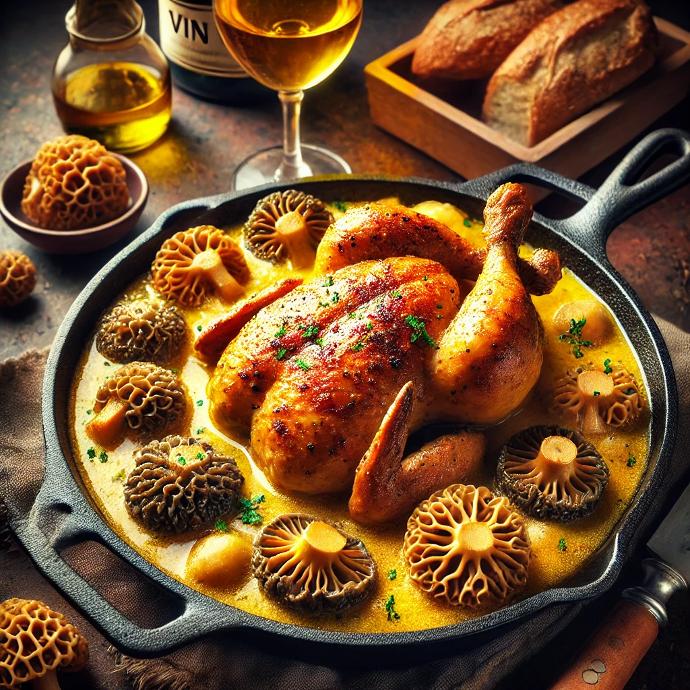
Coq au Vin Jaune
A rich and creamy Jura specialty, this dish features chicken slowly braised in vin jaune alongside morel mushrooms, a prized local ingredient. Vin jaune’s distinctive nutty, oxidative flavors infuse the chicken, adding layers of depth and a savory, complex profile. The morels contribute an earthy, slightly smoky undertone, creating a luxurious and flavorful sauce. Naturally, this dish pairs beautifully with vin jaune itself.
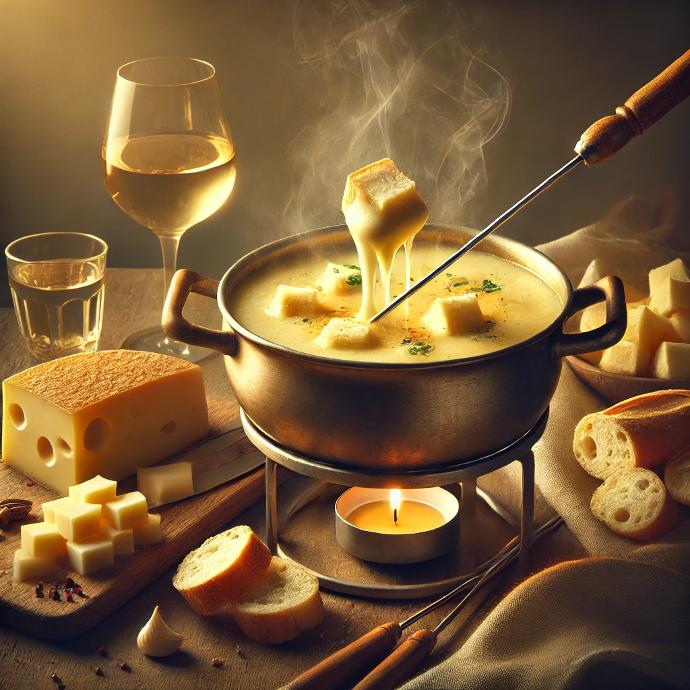
Fondue Jurassienne
This dish is a take on the classic Swiss fondue, featuring Comté cheese melted with white wine, garlic, and nutmeg. This cheese fondue has a smooth, velvety texture and is served with crusty bread for dipping. The nutty, caramelized notes of Comté cheese are enhanced by the wine, creating a cozy and satisfying winter dish. A Savagnin from Arbois makes an excellent pairing, as its slight oxidation and rich minerality echo the cheese’s flavors.
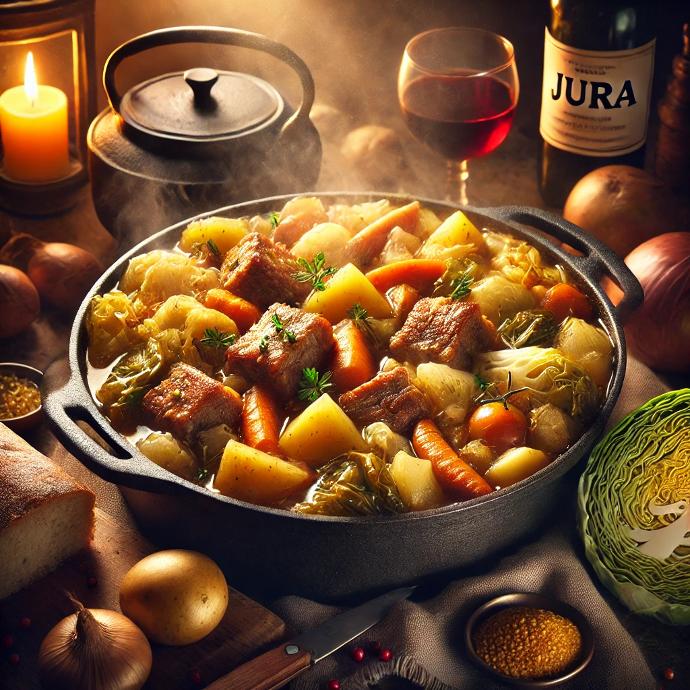
La Potée Comtoise
This rustic and filling stew combines pork, cabbage, potatoes, and root vegetables. The pork is typically smoked or salted, giving the stew a deep, comforting flavor that blends well with the mild sweetness of the cabbage and the earthiness of the root vegetables. Slow-cooked to allow flavors to meld, this dish captures the warmth and simplicity of Jura’s mountain cuisine. A Trousseau or Poulsard red wine from Jura works well with this dish.
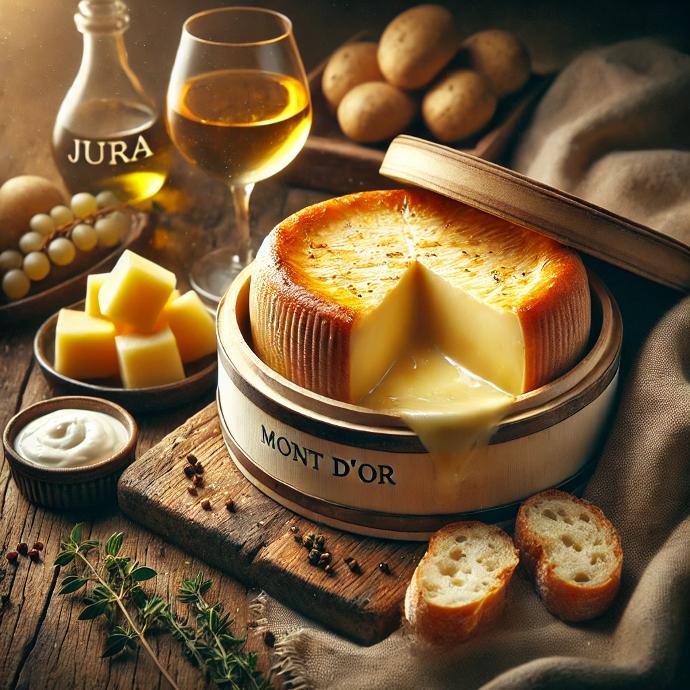
Boîte Chaude
This classic Jura winter dish features the creamy Mont d’Or cheese, baked in its spruce wood box until melted and bubbling. To prepare, the top rind of the cheese is cut off, and a small amount of white wine is poured on top before the cheese is baked in the oven. The result is a velvety, rich cheese perfect for dipping with crusty bread, boiled potatoes, and a selection of cured meats or pickles. Côtes du Jura Chardonnay will add a fresh contrast to the dish, balancing the richness of the cheese with its crisp acidity.
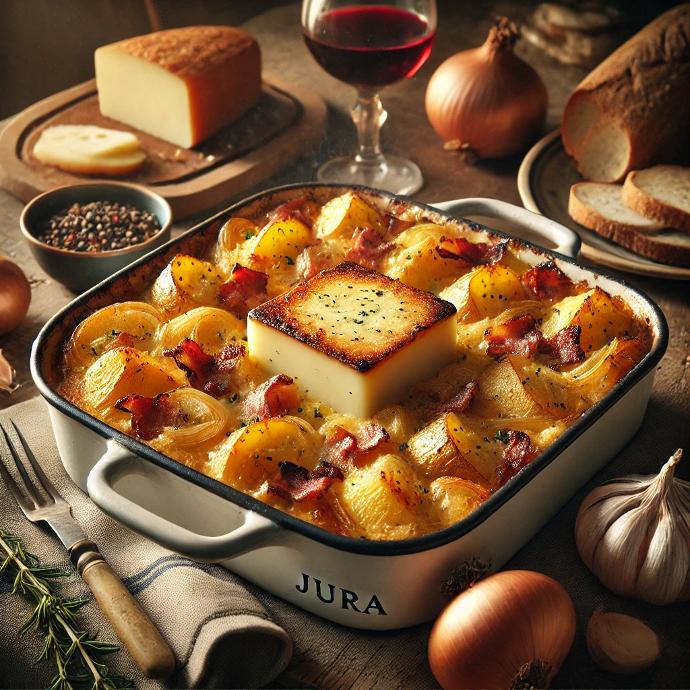
Morbiflette
Inspired by the famous tartiflette of the Savoie region, Morbiflette is a rich, baked casserole featuring Morbier cheese, potatoes, onions, and bacon. Morbier’s soft, creamy texture and mild flavor with hints of nuttiness and earthiness elevate the dish’s comforting appeal, while the onions and bacon provide sweetness and a smoky depth. Côtes du Jura Chardonnay is a wonderful match for Morbiflette, as its buttery notes and light oak aging enhance the cheese’s creaminess.
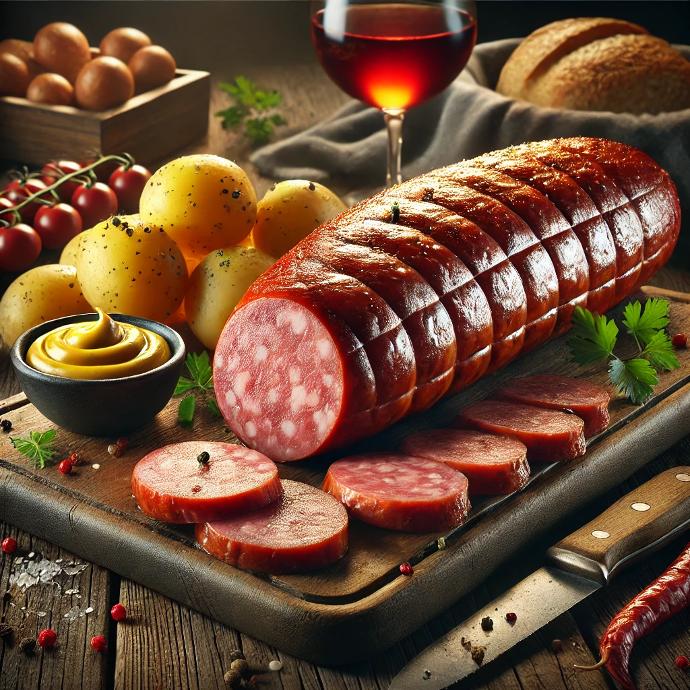
Saucisse de Morteau
This iconic smoked sausage, crafted in the Jura mountains, is known for its rich, smoky flavor and dense texture. The sausage is often boiled or grilled and served with potatoes or in stews, where its hearty, savory character shines. Saucisse de Morteau is traditionally made with high-quality pork and smoked over pinewood, giving it a unique flavor profile that is distinctly Jura. A Poulsard red wine from Jura, with its light body, subtle fruitiness, and slight smokiness, pairs excellently with the Saucisse de Morteau.
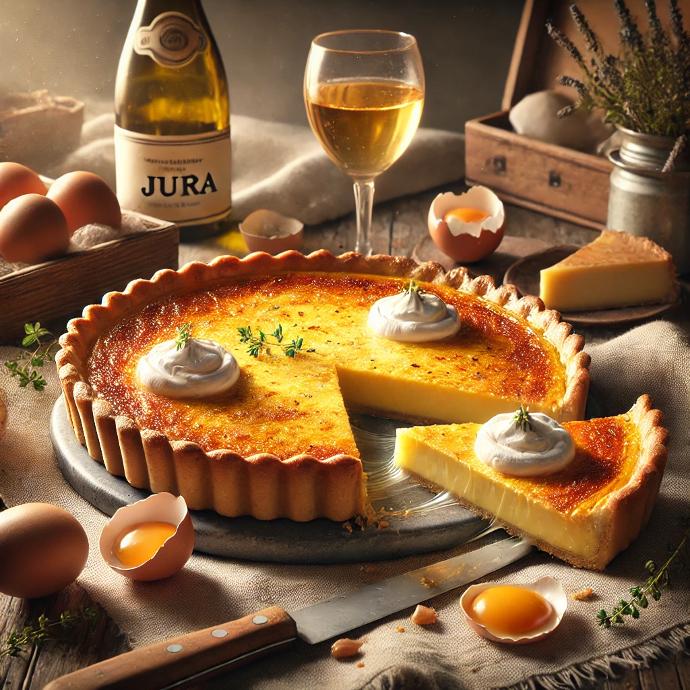
Tarte au Comté
This savory tart highlights Comté, one of Jura’s most famous and flavorful cheeses. It is made by blending grated Comté with a mixture of eggs and cream, then pouring it into a pastry shell and baking until golden and set. Tarte au Comté is often enjoyed warm and is perfect as an appetizer, a light meal, or a comforting snack. A Crémant du Jura adds a refreshing contrast, with its bubbles cutting through the tart’s richness for a perfectly balanced bite.
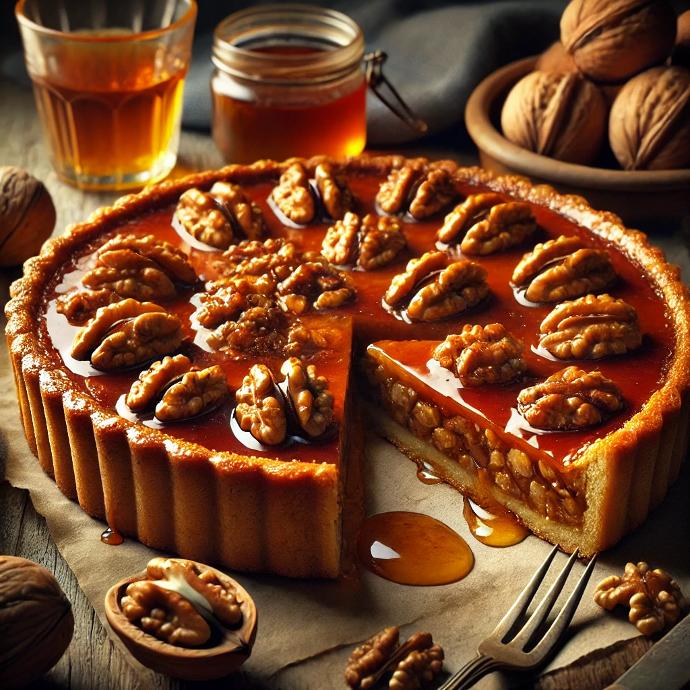
Tarte aux Noix
This traditional Jura dessert features a buttery pastry crust filled with a mixture of crushed walnuts, honey, sugar, cream, and sometimes a hint of vanilla or caramel. Once baked, the filling becomes beautifully caramelized, with a deep, earthy sweetness and a satisfying crunch. The perfect pairing for the tart is Vin de Paille, Jura’s renowned sweet wine, which mirrors the tart’s rich, nutty profile and balances its sweetness.
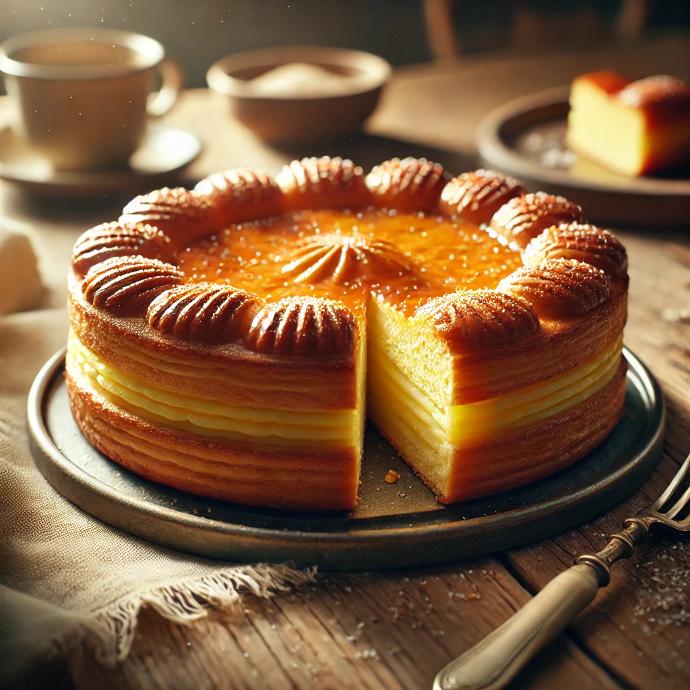
Gâteau de Ménage (Galette Comtoise)
This unique cake is made with a base of choux pastry (similar to the dough used for cream puffs) mixed with sugar, eggs, and sometimes a touch of orange blossom water or vanilla. When baked, it forms a light, airy, yet slightly custardy texture with a golden crust and a subtly sweet flavor. Pair Gâteau de Ménage with a Crémant du Jura, whose light bubbles and refreshing acidity complement the cake’s delicate flavors and airy texture.
Comté: Jura’s Cheese Treasure
The quintessential cheese of the Jura and Franche-Comté regions, Comté is renowned for its rich flavors and artisanal production methods. This PDO cheese is crafted in the high-altitude pastures of the Jura mountains.
Comté is the ideal companion for Jura wines, particularly vin jaune, whose nutty and oxidative profile complements the cheese’s rich flavors. The pairing creates a harmonious balance that reflects the deep connection between Jura’s winemaking and cheesemaking traditions. It also pairs wonderfully with other Jura wines, including Crémant du Jura, dry whites, and earthy reds.
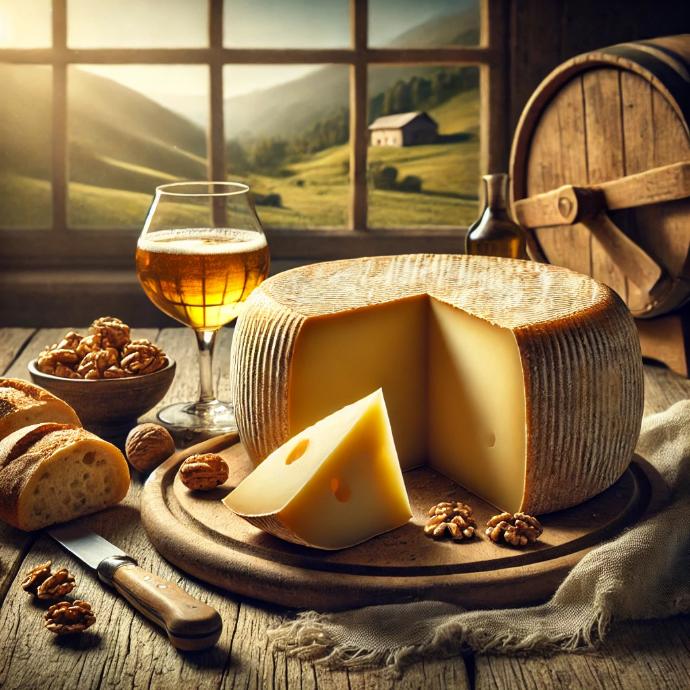
Enjoy Wine Experiences in Jura
While we don’t have Jura wine experiences available on the platform yet, we’re actively working on expanding our catalogue to include this unique wine region. Stay tuned as we continue to bring you more unforgettable wine and food adventures from across France and Europe!
In the meantime, explore our wine experiences in other wine regions of France, carefully selected by Winedering, the world's most popular wine and food experiences marketplace. These experiences, booked by thousands of customers, are the ones we highly recommend for creating memorable moments.
Bon voyage and cheers to an unforgettable Jura adventure!